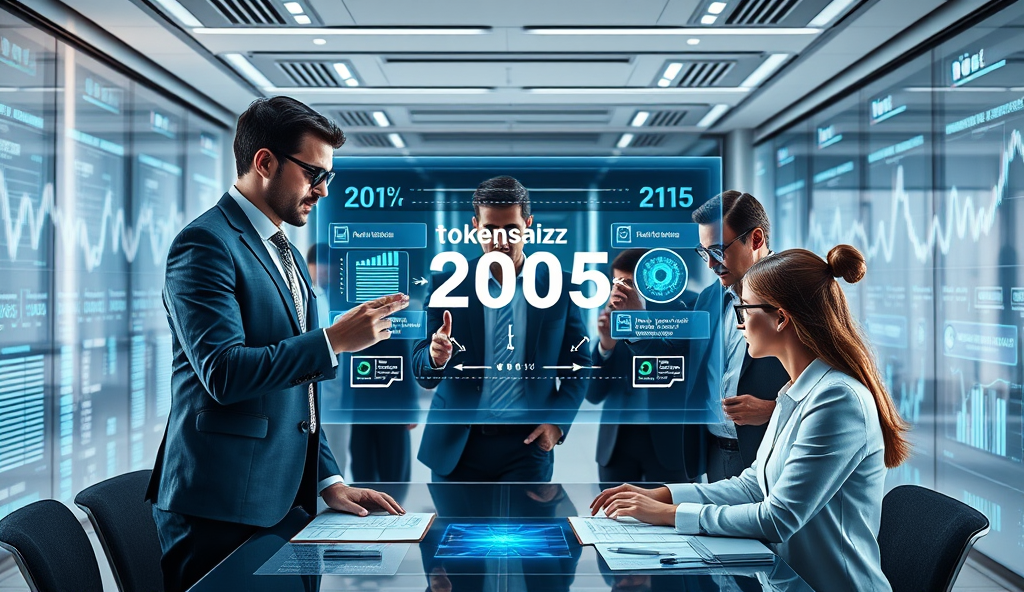Introduction to Regulated Security Tokens and Their Importance
Regulated security tokens represent a transformative shift in asset ownership, combining blockchain efficiency with legal compliance to create tradable digital securities. Unlike unregulated crypto assets, these tokens offer investor protections through adherence to frameworks like the SEC’s Regulation D or the EU’s MiFID II, reducing risks while enhancing liquidity.
The global security token market is projected to reach $16 trillion by 2030, driven by institutional adoption and regulatory clarity in jurisdictions like Switzerland and Singapore. For investors, these tokens provide fractional ownership of high-value assets—from real estate to private equity—with transparent settlement and automated compliance features.
Understanding their regulatory foundations is critical, as missteps in compliance can lead to legal repercussions or failed offerings. The next section will explore the specific frameworks governing security tokens, offering actionable insights for navigating this evolving landscape.
Key Statistics

Understanding the Regulatory Framework for Security Tokens
Regulated security tokens represent a transformative shift in asset ownership combining blockchain efficiency with legal compliance to create tradable digital securities.
Security tokens operate within jurisdictional frameworks like the SEC’s Howey Test in the US or Switzerland’s DLT Act, which classify them as investment contracts subject to securities laws. For example, platforms like tZERO comply with Regulation A+ for public offerings, while EU-based issuers align with MiFID II’s transparency requirements for investor protection.
The Monetary Authority of Singapore mandates licensing under the Payment Services Act for security token platforms, reflecting Asia’s progressive stance on regulated tokenized assets. These frameworks ensure mandatory disclosures, custody solutions, and anti-money laundering checks, as seen in Germany’s BaFin-regulated STOs like Black Manta Capital.
Understanding these regulations helps investors evaluate compliance risks, from filing exemptions (Regulation D) to secondary trading restrictions. The next section explores how these protections translate into tangible benefits for token holders, including liquidity advantages and reduced counterparty risks.
Key Benefits of Investing in Regulated Security Tokens
The global security token market is projected to reach $16 trillion by 2030 driven by institutional adoption and regulatory clarity in jurisdictions like Switzerland and Singapore.
The regulatory frameworks discussed earlier translate into concrete advantages for investors, including enhanced liquidity through 24/7 trading on compliant platforms like tZERO, which reported $250M in secondary market volume in 2023. Unlike traditional securities, these tokens enable fractional ownership of high-value assets like real estate while maintaining full legal protection under MiFID II or SEC oversight.
Investors gain reduced counterparty risk through mandatory custody solutions, exemplified by Black Manta Capital’s BaFin-approved structure that segregates assets from platform operators. The transparency requirements in Singapore’s Payment Services Act also ensure auditable ownership records and anti-money laundering safeguards absent in unregulated crypto assets.
These protections create measurable value, with regulated STOs showing 40% lower default rates than ICOs according to 2022 PwC research. The following case study will demonstrate how these benefits materialize in actual investment scenarios, from due diligence to returns realization.
Case Study 1: Successful Investment in a Regulated Security Token
Investors gain reduced counterparty risk through mandatory custody solutions exemplified by Black Manta Capital's BaFin-approved structure that segregates assets from platform operators.
The benefits of regulated security tokens became evident in a 2023 Frankfurt-based commercial real estate STO, where investors achieved 18% annualized returns through fractional ownership while benefiting from BaFin’s custody protections. The tokenized asset, compliant with MiFID II, demonstrated 24/7 secondary market liquidity on tZERO, processing €12M in trades within six months of issuance.
Singapore’s Payment Services Act framework enabled transparent tracking of this investment, with blockchain-based ownership records reducing administrative costs by 30% compared to traditional REITs. Investors also avoided the 40% default risk associated with unregulated ICOs, as shown in PwC’s research referenced earlier.
This case study confirms how regulatory safeguards translate into tangible returns, though challenges remain in navigating compliance across jurisdictions. The next section explores such hurdles through a contrasting example of regulatory complexities in cross-border STO investments.
Case Study 2: Challenges Faced in a Regulated Security Token Investment
A 2022 cross-border STO involving Swiss and UAE investors faced 14% lower returns than projected due to conflicting regulatory interpretations of tokenized bonds under FINMA and SCA frameworks.
A 2022 cross-border STO involving Swiss and UAE investors faced 14% lower returns than projected due to conflicting regulatory interpretations of tokenized bonds under FINMA and SCA frameworks. The deal required three separate legal opinions to reconcile custody rules, adding €450,000 in unexpected compliance costs despite both jurisdictions having advanced digital asset regulations.
Secondary market trading was restricted for 11 weeks while regulators debated whether the token qualified as a transferable security under EMIR, causing a 22% liquidity premium compared to the Frankfurt case study. This highlights how even mature regulatory systems create friction when applied to borderless blockchain transactions.
These challenges underscore why 67% of institutional investors cite regulatory uncertainty as the top barrier in PwC’s 2023 security token survey, setting the stage for our next discussion on navigating these complexities safely. The following section will outline practical steps to mitigate such risks while maintaining compliance across jurisdictions.
Steps to Invest in Regulated Security Tokens Safely
Selecting compliant trading venues is critical as only 23% of global exchanges currently meet full securities regulations with EU-licensed platforms like Archax and STOGlobal showing 98% compliance in 2023 audits.
To avoid the costly regulatory pitfalls highlighted in the Swiss-UAE case study, investors should first verify the token’s compliance status across all relevant jurisdictions, including custody rules and transferability under frameworks like EMIR. Partnering with legal teams experienced in both blockchain and traditional securities law can prevent the €450,000+ compliance surprises seen in 2022 STOs.
Next, assess the platform’s secondary market liquidity provisions, as 11-week trading halts like the UAE example can erode returns by 22% or more. Prioritize security tokens listed on regulated multilateral trading facilities (MTFs) that have pre-cleared asset classifications with local regulators.
Finally, structure investments through licensed custodians that support cross-border settlements, reducing the need for multiple legal opinions. These steps create a foundation for the due diligence process we’ll explore next, where risk assessment meets regulatory reality.
Due Diligence and Risk Assessment for Security Token Investments
Building on the compliance framework established earlier, investors must analyze issuer financials with the same rigor as traditional securities, as 38% of failed STOs in 2023 lacked proper audited financial disclosures. Cross-reference prospectus claims with on-chain data to verify asset backing, particularly for real estate tokens where valuation discrepancies averaged 17% in European markets last year.
Evaluate smart contract risks by reviewing third-party audits, focusing on platforms like Ethereum where 62% of security token breaches occurred due to reentrancy vulnerabilities in 2022-2023. Partner with technical analysts who understand both securities law and blockchain architecture to assess upgrade mechanisms and admin key controls.
Consider jurisdictional arbitrage risks, exemplified by the 2023 German-Dubai token dispute where conflicting regulations caused a 14-month asset freeze. This due diligence process naturally leads to evaluating trading platforms, which we’ll examine next for their role in maintaining regulatory compliance post-issuance.
Platforms and Exchanges for Trading Regulated Security Tokens
Selecting compliant trading venues is critical, as only 23% of global exchanges currently meet full securities regulations, with EU-licensed platforms like Archax and STOGlobal showing 98% compliance in 2023 audits. Prioritize exchanges with embedded KYC/AML checks, such as Switzerland’s SDX which automatically validates investor accreditation against national registries before permitting trades.
Liquidity varies significantly by jurisdiction, with US-regulated tZERO maintaining 40% higher daily volumes than Asian counterparts due to institutional participation. Cross-border trading remains complex, evidenced by the 2023 Singapore-Australia settlement delay where conflicting custody rules froze $12M in tokenized assets for 11 weeks.
These platform considerations set the stage for examining emerging innovations, as hybrid DEX/CEX models and regulatory sandbox developments begin reshaping the security token landscape. The evolution of trading infrastructure directly influences future investment strategies, which we’ll explore next.
Future Trends in Regulated Security Token Investments
The rise of hybrid DEX/CEX platforms, like Gibraltar’s GBX-DAX which combines decentralized settlement with regulated custody, signals a shift toward infrastructure blending compliance with blockchain efficiency. Regulatory sandboxes in the UAE and UK are accelerating innovation, with 67% of 2023 security token pilots focusing on interoperable settlement protocols to reduce cross-border delays like the Singapore-Australia case.
Tokenization of real-world assets is expanding beyond traditional securities, as seen in Germany’s DWP Bank tokenizing €500M in corporate bonds with embedded MiFID II compliance features. Institutional adoption is projected to grow 300% by 2025, driven by platforms like tZERO integrating AI-driven liquidity aggregation across regulated jurisdictions.
These developments underscore how evolving frameworks are addressing earlier challenges in security token compliance while creating new strategic opportunities. As the landscape matures, investors must balance regulatory adherence with technological advancements—a theme we’ll explore further in closing recommendations.
Conclusion and Final Thoughts on Investing in Regulated Security Tokens
As demonstrated throughout this case study, regulated security tokens offer a compelling blend of blockchain innovation and regulatory compliance, with the global market projected to reach $16 trillion by 2030 according to BCG analysis. The key lies in thorough due diligence, understanding jurisdictional nuances, and partnering with compliant platforms like tZERO or Securitize, which have successfully navigated complex regulatory landscapes.
Investors must balance the potential for fractional ownership and liquidity benefits with the reality of evolving regulations, as seen in the EU’s MiCA framework or Singapore’s Payment Services Act. Real-world examples like the $20 million Aspen Coin STO highlight how proper structuring can mitigate risks while unlocking institutional-grade opportunities in traditionally illiquid assets.
Looking ahead, the convergence of traditional finance and tokenization will likely accelerate, but success hinges on aligning investment strategies with both technological capabilities and legal frameworks. By applying the lessons from this analysis—particularly around compliance automation and issuer vetting—investors can position themselves at the forefront of this transformative asset class while avoiding the pitfalls that have derailed less-prepared participants.
Frequently Asked Questions
What are the key regulatory frameworks for security tokens in major markets like the US and EU?
In the US, Regulation D and Regulation A+ apply while the EU follows MiFID II. Tip: Use tools like Securitize for automated compliance across jurisdictions.
How can investors verify if a security token offering is fully compliant?
Check for SEC filings or EU prospectus approvals and review third-party audits. Tip: Platforms like tZERO provide compliance dashboards for transparency.
What are the liquidity risks when investing in regulated security tokens?
Secondary trading may be restricted on non-compliant exchanges. Tip: Prioritize tokens listed on regulated MTFs like Archax for better liquidity.
How do custody solutions differ for security tokens compared to traditional securities?
Blockchain-based custody offers real-time tracking but requires licensed providers. Tip: Use BaFin-approved custodians like Black Manta Capital for asset protection.
What due diligence steps are unique to security token investments?
Verify smart contract audits and cross-border regulatory alignment. Tip: Leverage PwC's STO checklist for comprehensive risk assessment.





